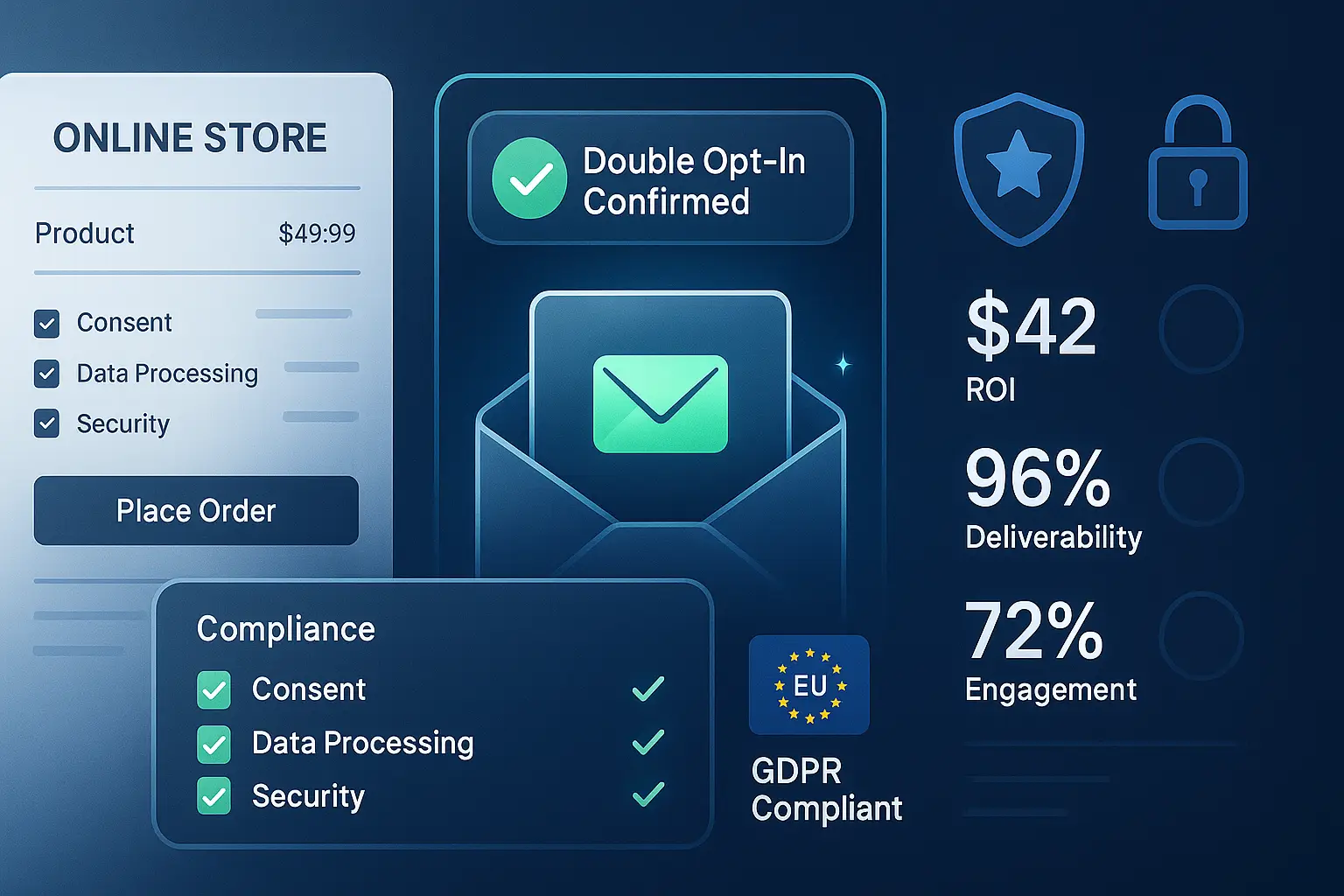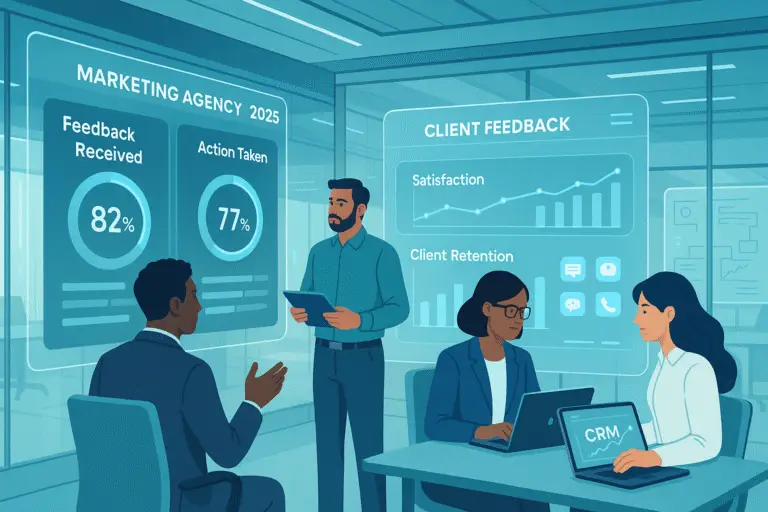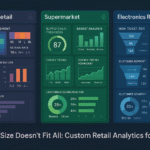Proper gdpr compliant email marketing has become essential for ecommerce businesses looking to maintain customer trust while avoiding hefty fines. The European Union’s General Data Protection Regulation continues to shape how online retailers collect, process, and utilize customer email data, requiring specific strategies that balance compliance with marketing effectiveness.
We’ll cover the following areas:
- The fundamentals of GDPR email list management and consent requirements for ecommerce
- Practical implementation of double opt-in GDPR processes and consent record maintenance
- How to handle GDPR transactional emails versus marketing communications
- Essential gdpr email tools to streamline compliance in your ecommerce operations
- Best practices for providing easy opt-out options while maintaining engagement
Understanding GDPR Basics for Ecommerce Email Marketing
GDPR fundamentally changed how online businesses approach customer data. For ecommerce stores, email marketing remains one of the most valuable communication channels, but it now requires careful compliance consideration.
The regulation applies to any business processing EU citizens’ data, regardless of where the company is based. Non-compliance penalties can reach up to €20 million or 4% of annual global turnover, making proper email data security GDPR practices not just good ethics but smart business.
The cornerstone of GDPR compliant email marketing for ecommerce stores is obtaining proper consent. Unlike pre-GDPR practices, implied consent or pre-checked boxes are no longer sufficient. Consent must be freely given, specific, informed, and unambiguous.
Obtaining Valid Ecommerce Email Consent
Getting proper consent is the foundation of GDPR compliance. To implement gdpr compliant email marketing for ecommerce stores, you need to follow specific guidelines:
Clear Consent Requests
Your consent requests must be transparent about:
- What specific data you’re collecting
- How you’ll use the customer’s email address
- Which third parties might receive their data
- How customers can withdraw consent later
When designing your signup forms, avoid bundling consent for email marketing with other agreements. Each purpose requires separate, specific consent. For example, consenting to receive a purchase receipt email doesn’t automatically grant permission for marketing emails.
Implementing Double Opt-In
While not explicitly mandated by GDPR, double opt-in GDPR processes provide an additional layer of consent verification that helps prove compliance. After a customer submits their email on your site, they receive a confirmation email requiring them to click a link to verify their subscription.
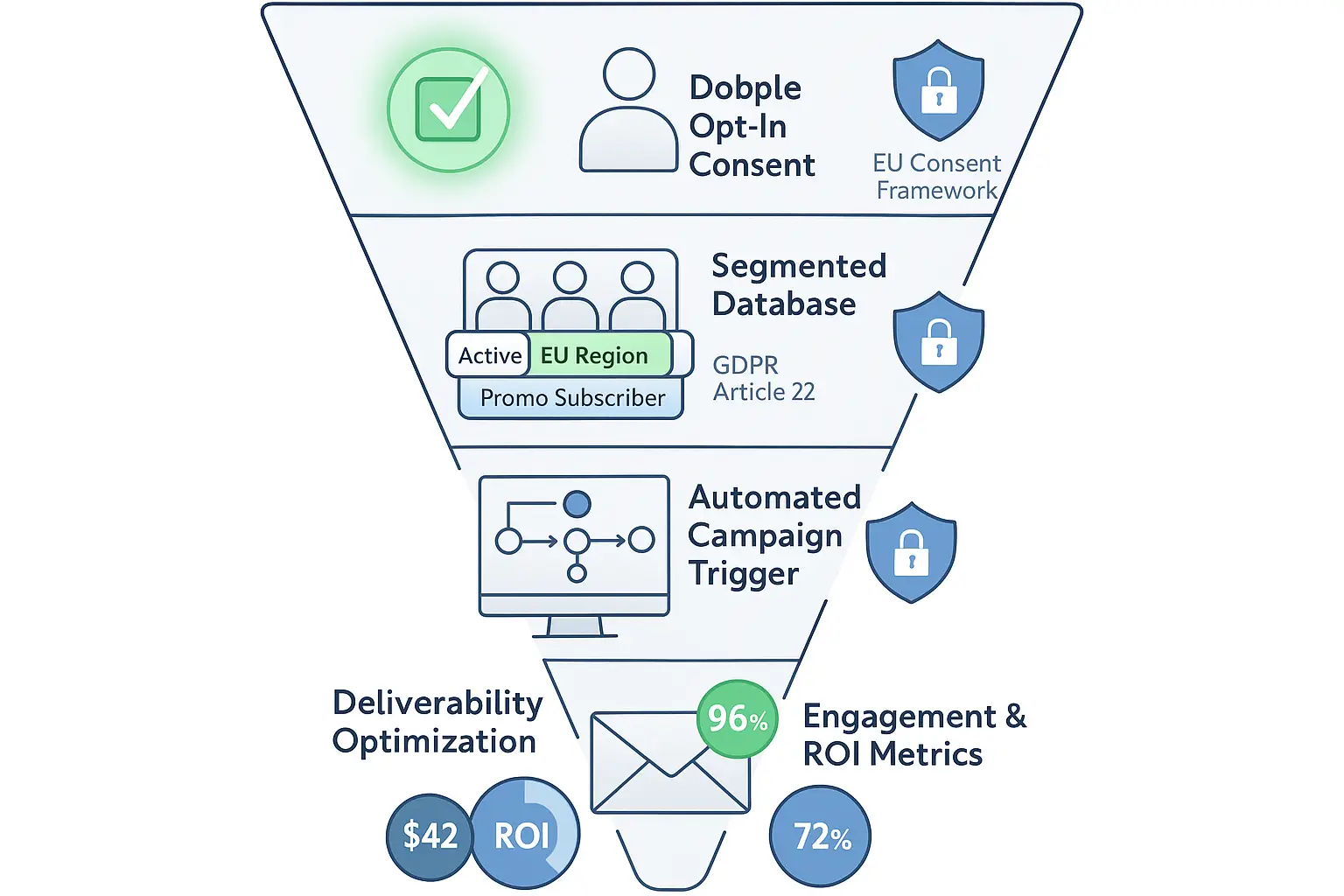
This two-step process creates a clear consent trail and ensures the email address belongs to the person who provided it. For gdpr double opt-in requirements for ecommerce email lists, make sure your confirmation emails:
- Clearly state what the user is subscribing to
- Include your company information
- Explain how to opt out
- Use simple, jargon-free language
Managing E-commerce Email Lists Under GDPR
Proper GDPR email list management goes beyond initial consent collection. You need ongoing processes to maintain compliance:
Record-Keeping Requirements
You must maintain records of how and when consent was obtained for each subscriber. This includes:
- Time and date of consent
- The specific wording of consent requests shown
- What marketing communications they agreed to receive
- Method of consent (website form, in-person event, etc.)
Understanding how to store email consent records for gdpr compliance is critical. Create a centralized database that securely stores these consent records, and ensure they’re easily accessible if a regulatory authority requests them.
For pre-GDPR email lists, you’ll likely need to run re-permission campaigns if you can’t demonstrate proper consent was obtained according to current standards.
GDPR-Compliant Email Content and Structure
Even after obtaining proper consent, the actual emails you send must follow GDPR requirements.
Marketing vs. Transactional Emails
GDPR transactional emails (order confirmations, shipping notifications, etc.) don’t require the same explicit marketing consent because they’re necessary to fulfill your contractual obligations. However, these emails should still:
- Include only necessary information related to the transaction
- Not contain significant marketing content
- Include your privacy policy and contact information
For marketing emails, ensure every message includes:
- Your company’s identity and contact information
- Clear information about how to provide easy opt-out options in ecommerce emails
- A link to your privacy policy
- Content that matches what the customer consented to receive
Essential GDPR Email Tools for Ecommerce
Several gdpr email tools can help streamline compliance:
- Consent management platforms that create compliant signup forms and maintain audit trails
- Email marketing platforms with built-in GDPR features like double opt-in, consent tracking, and automatic unsubscribe management
- Data processing agreement (DPA) templates for any third-party services handling customer emails
- Cookie consent management tools for website visitor tracking
When selecting email marketing software for your ecommerce business, prioritize platforms that offer robust GDPR compliance features. Look for options that make it easy to:
- Segment subscribers based on consent status
- Automate consent expiration and renewal processes
- Generate compliance reports
- Implement data retention policies
Managing Unsubscribes and Data Subject Rights
Learning how to get gdpr consent for ecommerce email newsletters is just one part of the compliance journey. You must also respect when customers withdraw that consent:
- Make unsubscribe links prominent and easy to find in every marketing email
- Process unsubscribe requests immediately without requiring additional steps or logins
- Never charge fees or create barriers to opting out
- Keep records of unsubscribe requests and dates
Beyond unsubscribes, GDPR grants data subjects additional rights you must honor:
- Right to access their personal data
- Right to correct inaccurate data
- Right to data portability
- Right to be forgotten (data erasure)
Implement clear processes for handling these requests within your ecommerce business, with designated team members responsible for fulfilling them within the required one-month timeframe.
International Ecommerce Considerations
If your ecommerce store serves customers globally, you’ll need to address multiple privacy regulations:
- GDPR for European customers
- CCPA/CPRA for California residents
- CASL for Canadian customers
- LGPD for Brazilian customers
Rather than creating different experiences for customers in different regions, many ecommerce businesses now apply GDPR-level standards globally as a baseline. This simplifies operations and often provides better customer experiences overall.
GDPR Compliance Roadmap for Ecommerce Email Marketing
To implement gdpr compliant email marketing, follow these sequential steps:
- Audit your current practices – Review current email collection points, existing lists, and consent records
- Update privacy policies – Ensure your documents clearly explain email data handling practices
- Redesign consent mechanisms – Implement GDPR-compliant opt-in processes across all customer touchpoints
- Clean existing databases – Re-permission campaigns for contacts without adequate consent records
- Train team members – Ensure everyone understands GDPR requirements for customer communications
- Implement proper security – Apply encryption and access controls to email databases
- Document everything – Maintain comprehensive records of compliance efforts
Conclusion
Implementing gdpr compliant email marketing requires careful attention to consent mechanisms, list management practices, and ongoing communication strategies. For ecommerce businesses, balancing compliance with effective customer engagement isn’t just about avoiding fines—it’s about building trust and respecting customer privacy preferences.
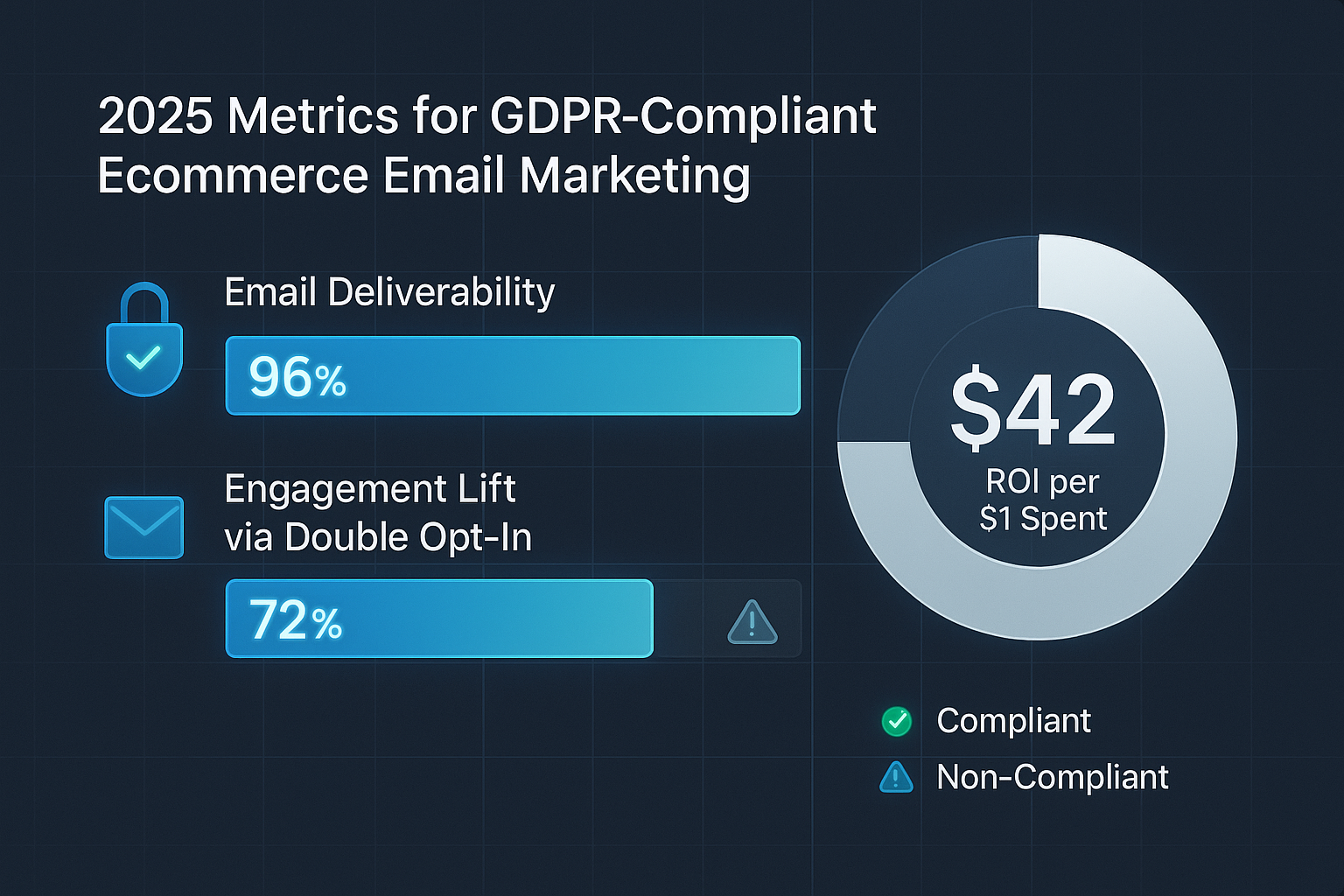
By following proper ecommerce email consent practices and utilizing appropriate tools, you can create email marketing programs that both respect regulations and drive business results. The effort invested in compliance pays dividends through improved customer relationships, cleaner lists, and more focused marketing efforts.
Have you implemented GDPR compliance in your ecommerce email marketing? I’d love to hear about your experiences, challenges, and solutions in the comments below!
Discover more from SaaSPrism
Subscribe to get the latest posts sent to your email.

